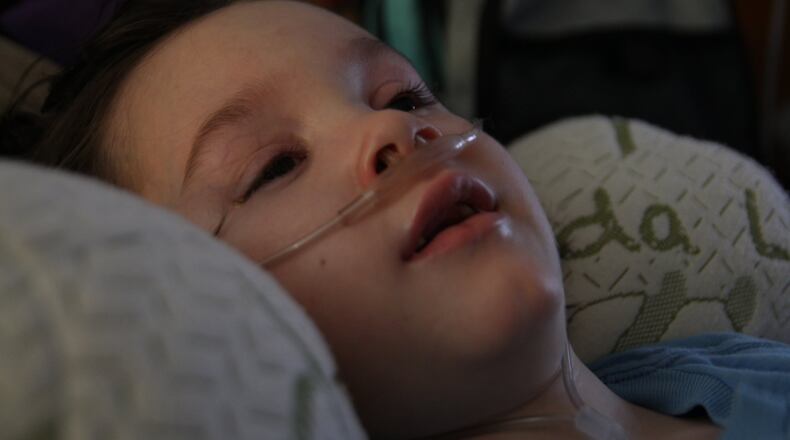On January 24, 2011, just shy of his second birthday, his parents received devastating news — their baby boy had been diagnosed with GM1 Gangliosidosis.
GM1 Gangliosidosis is a lysosomal storage disorder categorized as a rare disease affecting approximately 25 children children born per year.
A normal body produces fat (lipids) for cells to use, one of which is GM1 Ganglioside. That normal body also has enzymes to break these fats down. Armand has a deficiency in an enzyme called beta-galactosidase, causing a buildup of this GM1 Ganglioside, mostly in his brain and spinal cord.
Armand declined quickly from a seemingly normal child, to one who could no longer walk or talk. Today he is a frail 7-year-old who suffers from muscle weakness throughout his body causing extreme respiratory and eating problems requiring full-time caregiving. He has frequent seizures and uses a feeding tube, a wheelchair and a litany of medical equipment to assist with his breathing.
Since starting this journey with his son, Tim, 39, who lives in Centerville, has become a vocal advocate not only for his son and his disease, but for rare diseases across the board.
He appeared at the Dayton City Commission meeting last week to speak on Rare Disease Day which takes place across the country on Feb. 29 — it's a day dedicated to educating the public on rare diseases and just how common they really are when you consider them as a whole.
“Before Armand’s diagnosis I was completely ignorant about rare diseases. I remember one of our first meetings with the doctors in Minnesota reading that it was Rare Disease Day (in 2011), and from there did a lot of research,” said Tim. “Like anything else, it’s not something you think too deeply about until it affects you directly or someone close to you. And since then I’ve heard from lots of people who have rare diseases themselves who never knew there was a Rare Disease Day or that there were groups advocating on their behalf, even if it wasn’t for their particular disease specifically,” said Tim.
According to the National Organization for Rare Disorders (NORD) any disease affecting fewer than 200,000 people is considered rare. And with nearly 7,000 rare diseases affecting almost 30 million Americans, around one in ten Americans are currently struggling with some kind of rare disease.
The majority of these rare diseases are genetic, progressive and catastrophic. Approximately half of those suffering are children and 30 percent will not live to see their fifth birthday.
Because these individual conditions are so rare, there is very little medical research conducted to study them. In fact, 95 percent of rare diseases have no FDA approved treatment leaving patients and parents not only struggling with major medical issues, but struggling to receive a proper diagnosis, get any kind of information and investigate treatment options. Only about half of all rare diseases have an organization to advocate on their behalf, educate the public or raise funds to help families and individuals.
It’s something Tim and Sutton, who lives in Miamisburg and shares parenting with him, know well. Currently GM1 Gangliosidosis has no FDA-approved treatment.
“(Armand) is part of a clinical trial at the University of Minnesota Masonic Children’s Hospital with an investigative treatment using Zavesca, a drug that is FDA-approved for Gaucher’s Disease (another lysosomal storage disorder). The doctors are hoping that the clinical trial may result in approval for Zacvesca to treat not only GM1 Gangliosidosis, but also the related diseases Tay-Sachs and Mucopolysaccharidosis (MPS). The doctors feel the treatment has extended his life, and work is being done at various locations on something that would be closer to a cure,” said Tim.
Doctors have said that Armand likely won’t live past his 10th birthday, but his family is hoping his life will be extended through the clinical trial he is participating in.
“To me the most important takeaway is that you probably know someone with a rare disease, be it chronic or life-threatening, and they need your help and support because often they don’t have advocacy groups or sports leagues raising money and awareness — many times it falls on the parents, family members, researchers, and the patients themselves to raise funds and awareness,” said Tim.
About the Author

